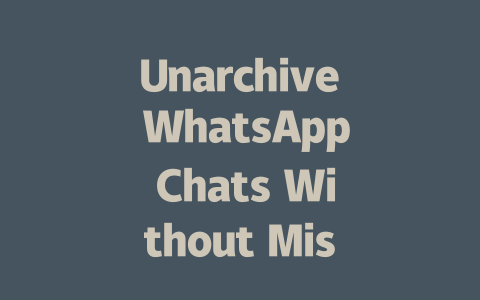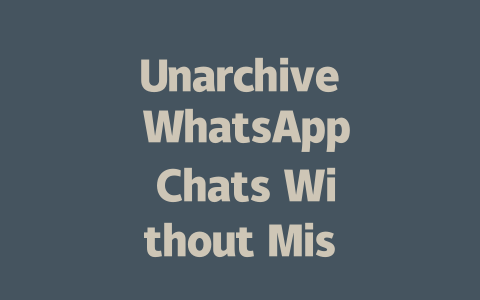You know that feeling when you’re scrolling through your social media feed, and everyone seems to be talking about something you’ve never even heard of? It’s frustrating, right? In today’s fast-paced world, staying on top of the latest news is more important than ever. But how do you ensure you’re always in the loop without spending all day glued to your screen? Let me share a few tricks I’ve picked up over the years—these have worked wonders for keeping me informed without feeling overwhelmed.
Why Staying Updated Matters in 2025
Let’s break it down. Think about why you care about staying updated. Is it because you want to impress your coworkers during lunch breaks by dropping tidbits about global politics? Or maybe you just don’t want to miss out on major events that could affect your daily life. Whatever your reason, staying current isn’t just about sounding smart—it’s about being prepared.
I remember last year when my friend missed an important deadline at work because they weren’t aware of new regulations affecting their industry. They told me, “If only I had kept better track of what was happening around me.” That stuck with me. Since then, I’ve made it a point to stay informed—not just for personal growth but also for professional reasons. Here’s how I do it:
What Makes Reliable Sources Stand Out?
When choosing where to get your news from, trustworthiness is key. A reliable source will give you facts backed by credible research or expert opinions. For example, sites like BBC and The New York Times are well-known for their thorough fact-checking processes. These organizations prioritize accuracy, which makes them go-to options for many people seeking dependable information.
But here’s the thing: not every site has this level of integrity. Some places might sensationalize headlines to grab attention, which can lead to misinformation. So, before diving into any article, ask yourself: Does this website have a history of delivering factual content? If you’re unsure, cross-reference with another reputable outlet.
Strategies for Staying Informed Without Burning Out
Now let’s talk strategies. You don’t need to dedicate hours each day to reading articles to stay updated. There are smarter ways to keep tabs on the latest happenings without letting it take over your life.
One trick I swear by is setting up custom alerts for topics that matter most to you. Tools like Google Alerts allow you to receive notifications whenever there’s fresh content related to specific keywords. For instance, if you’re interested in advancements in AI technology, you can set up an alert for “AI breakthroughs” or “machine learning innovations.”
Here’s why this works so well: instead of constantly searching for updates yourself, these tools bring the information straight to you. Plus, you control exactly what shows up in your feed. Just make sure you’re selective about the terms you choose; too broad, and you’ll end up inundated with irrelevant emails.
Example Scenario
Last month, I set up an alert for “latest smartphone releases.” Every time a new model hit the market, I got notified instantly. This way, I stayed ahead without wasting hours browsing tech blogs manually. And guess what? My friends were impressed when I casually mentioned details about a phone release they hadn’t even heard about yet!
Another piece of advice I’d give anyone trying to stay informed is to focus on quality sources rather than quantity. Instead of skimming through dozens of mediocre articles, invest time in digesting high-quality pieces from trusted publications.
For example, imagine you come across two articles discussing climate change. One is written by a team of scientists who’ve conducted extensive studies on the subject, while the other is penned by someone whose main expertise lies in marketing. Which one would you trust more? Exactly. Stick to sources that align with your goal of gaining accurate knowledge.
Using Feeds Wisely
RSS feeds are another great tool for consolidating quality content into one place. Platforms like Feedly let you subscribe to your favorite websites and view all their latest posts in one dashboard. No hopping between different apps or browsers—just everything neatly organized in one spot.
> Pro Tip: To avoid burnout, limit the number of subscriptions you add to your feed. Choose only those outlets that consistently deliver value.
Just as you wouldn’t eat junk food exclusively, you shouldn’t consume only one type of news. Make sure your media diet includes diverse perspectives. This helps prevent confirmation bias—where you only seek out information that supports your existing beliefs.
For example, if you typically lean toward conservative viewpoints, challenge yourself to read something from a liberal publication once in a while. Conversely, if you usually favor progressive stances, try understanding the opposing side’s argument. Doing this not only broadens your perspective but also makes you a more thoughtful consumer of information.
| Topic | Recommended Source | Why It’s Trusted |
|---|---|---|
| World News | BBC | Known for unbiased reporting |
| Technology | TechCrunch | Covers cutting-edge tech trends |
| Science | National Geographic | Expertise in scientific exploration |
This table gives you quick access to some of the best sources out there. Use it as a starting point for building your personalized list of go-to news outlets.
Final Thoughts (Sort Of…)
Remember, staying informed doesn’t mean you have to sacrifice your sanity. By using tools like custom alerts, prioritizing quality content, and balancing your media diet, you can maintain awareness without feeling drained. Give these methods a shot—I guarantee you’ll notice a difference within weeks.
And hey, if you find this helpful, drop me a line! Hearing back from readers keeps me motivated to share more tips. Oh, and if you’ve got your own tricks for staying updated, I’d love to hear about them too. Who knows? Maybe we can both learn something new!
If you’re wondering about managing chats across different platforms, rest assured that unarchiving a WhatsApp chat is just as simple on Android as it is on iOS. All you need to do is head over to the Archived section within the app, find the conversation you want back in your main list, and tap on it. Once you interact with the chat, it will instantly reappear in your regular chat view. This straightforward process ensures that no matter which device you’re using, your archived conversations are always just a few taps away from being accessible again.
Concerning the number of chats you can archive at one time, WhatsApp doesn’t put strict limits on this action. Using the multi-select feature, you can easily select and archive multiple conversations simultaneously—whether it’s 5-12 chats or even more. It’s a great way to tidy up your inbox without having to go through each chat individually. Plus, when these chats are brought back into your main list, they’ll behave exactly like any other active conversation, complete with notifications unless you’ve turned them off specifically for those chats. If you ever misplace your phone, though, keep in mind that remote unarchiving isn’t possible; you’d need to rely on restoring backups to access both your archived and regular chats on a new device.
# FAQs
#
Can I unarchive a WhatsApp chat on both Android and iOS?
Yes, you can unarchive chats on both Android and iOS. The process is similar across both platforms: simply open the Archived folder, tap on the chat you wish to unarchive, and it will automatically move back to your main chat list.
#
Will unarchiving a WhatsApp chat delete any messages within the chat?
No, unarchiving a chat does not delete any messages. All messages from the archived chat remain intact and are available as soon as the chat is unarchived. This ensures you don’t lose any important information.
#
How many chats can I archive in WhatsApp at once?
WhatsApp allows you to archive multiple chats at once by using the multi-select feature. However, there is no specific limit to the number of chats you can archive (5-12 chats or more can be easily selected and archived simultaneously).
#
Do archived chats still receive notifications when unarchived?
Yes, once a chat is unarchived, it behaves like any other chat in your main chat list and will resume receiving notifications unless you manually disable them for that specific chat.
#
Is it possible to unarchive a chat remotely if my phone is lost or stolen?
No, you cannot unarchive chats remotely if your phone is lost or stolen. Unarchiving requires access to the WhatsApp app on your device. However, restoring your chats from a backup on a new device will include both archived and unarchived chats.




